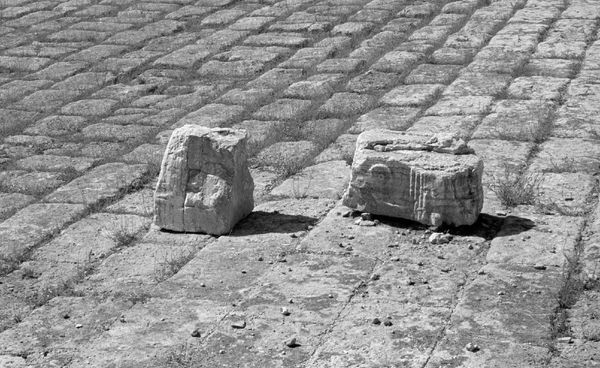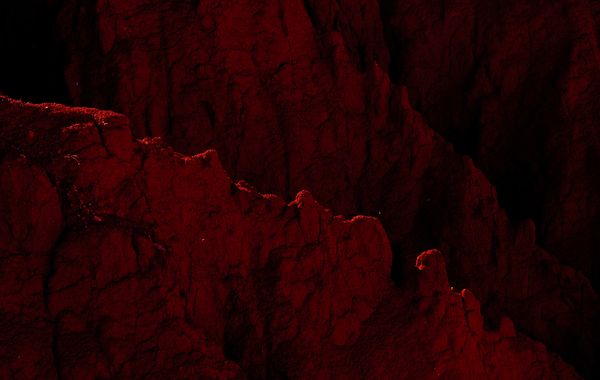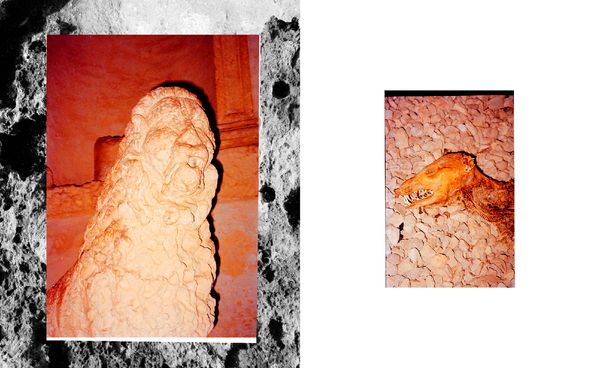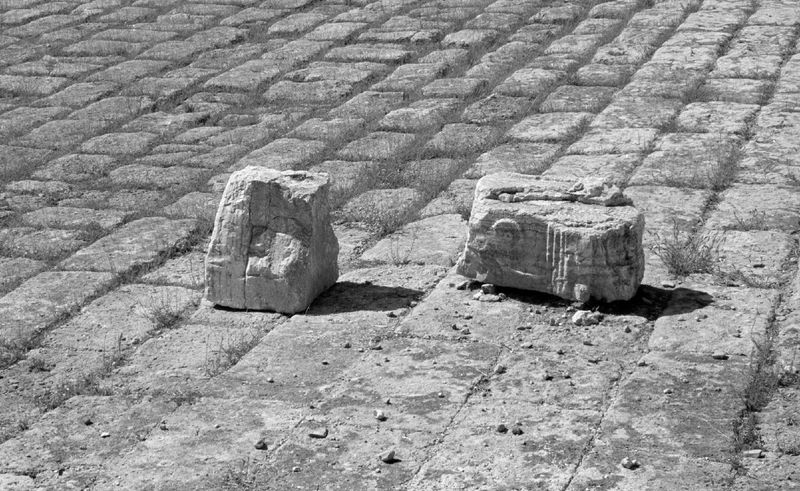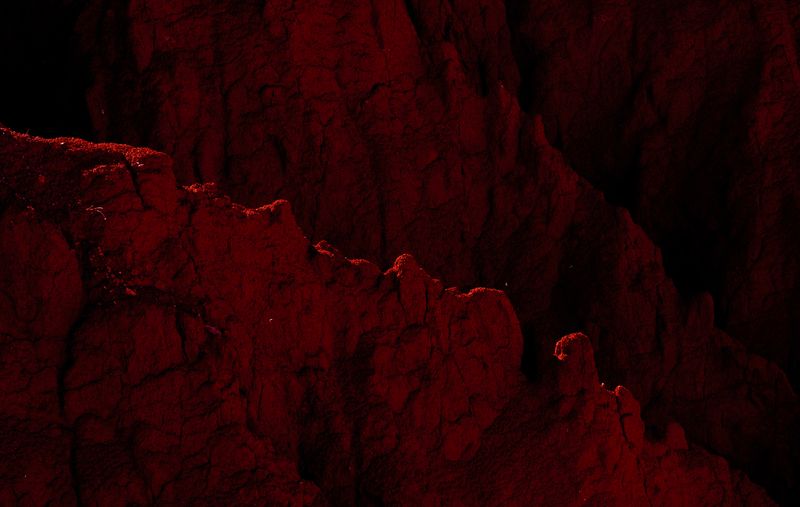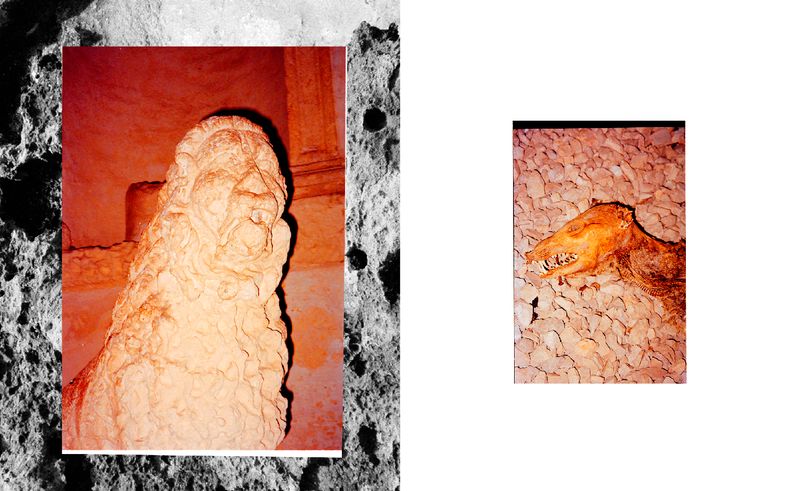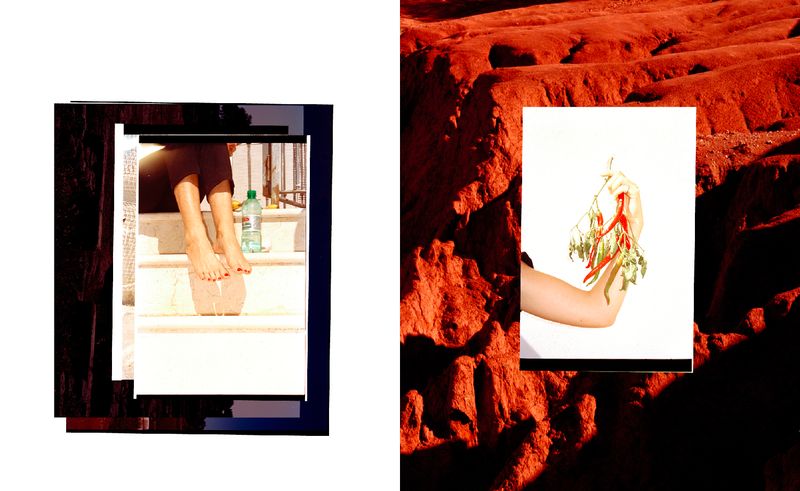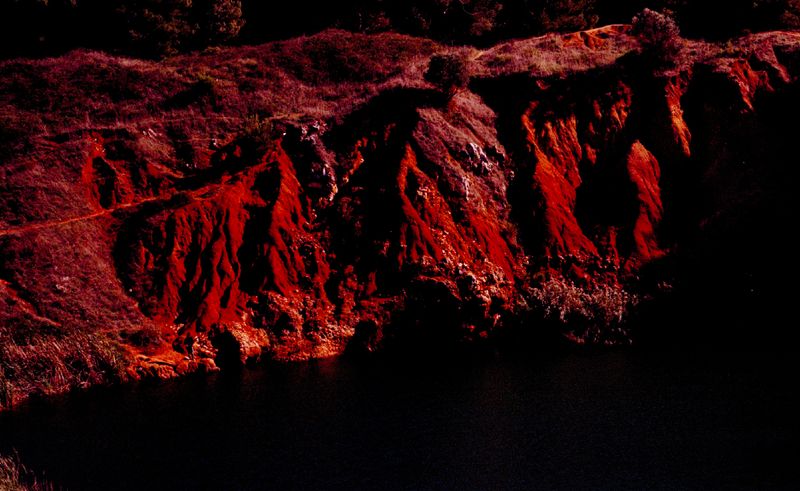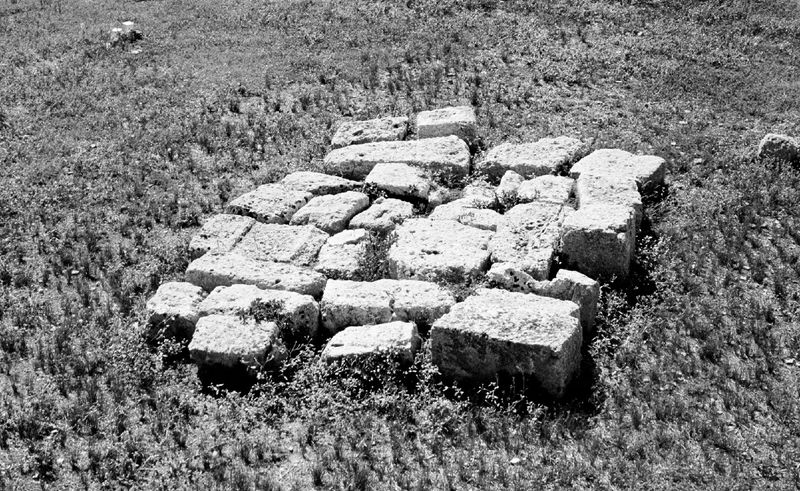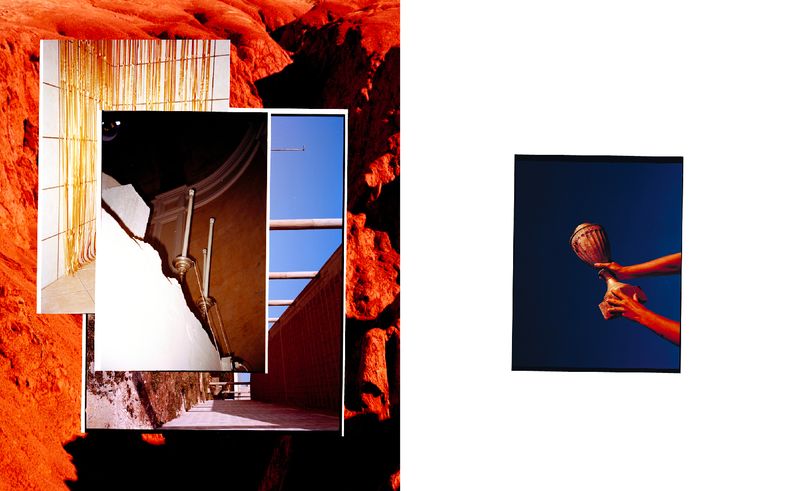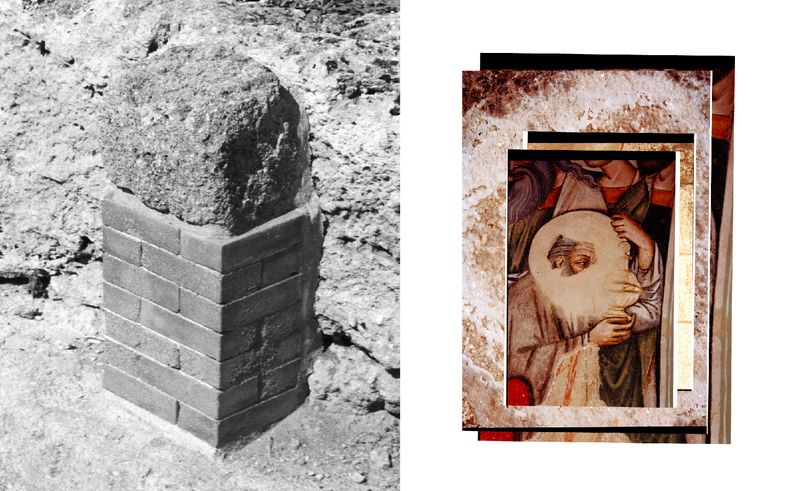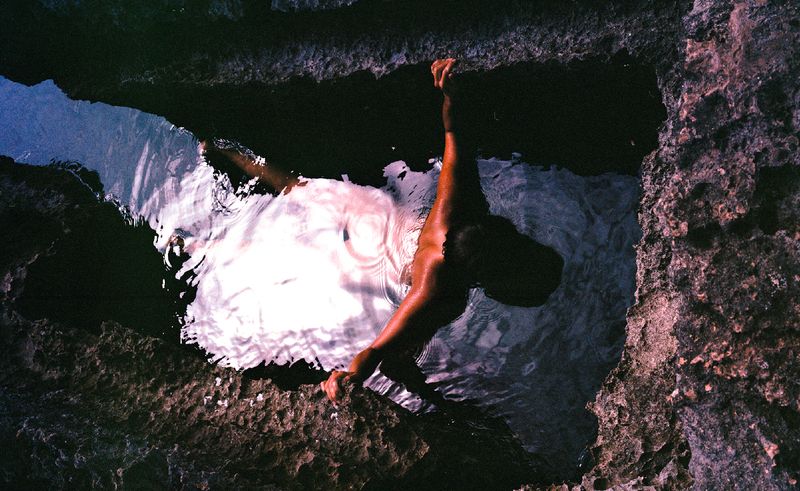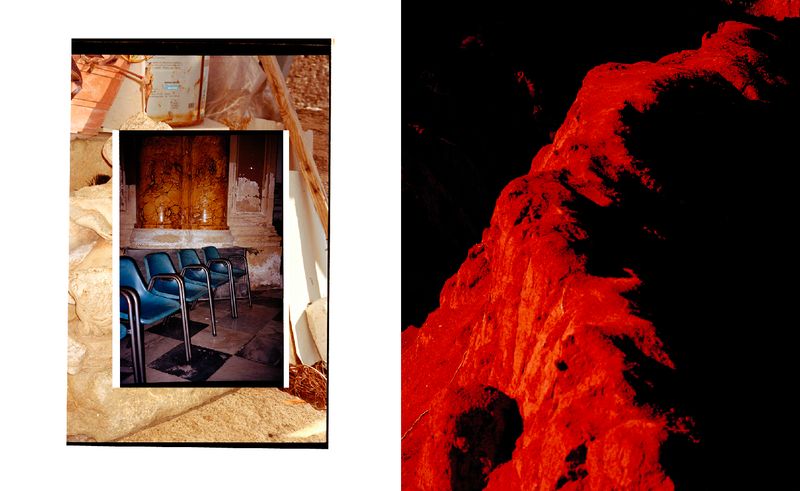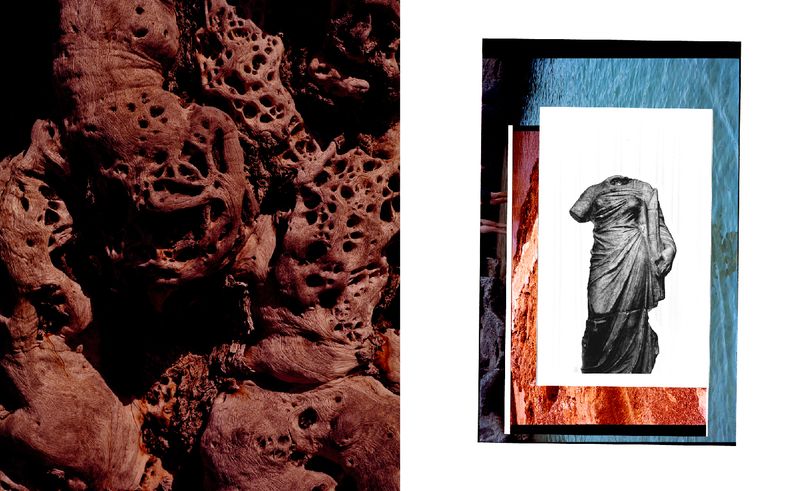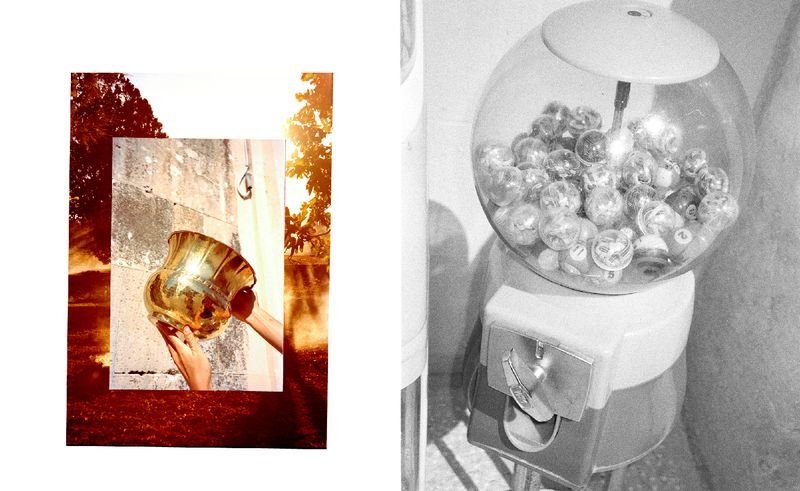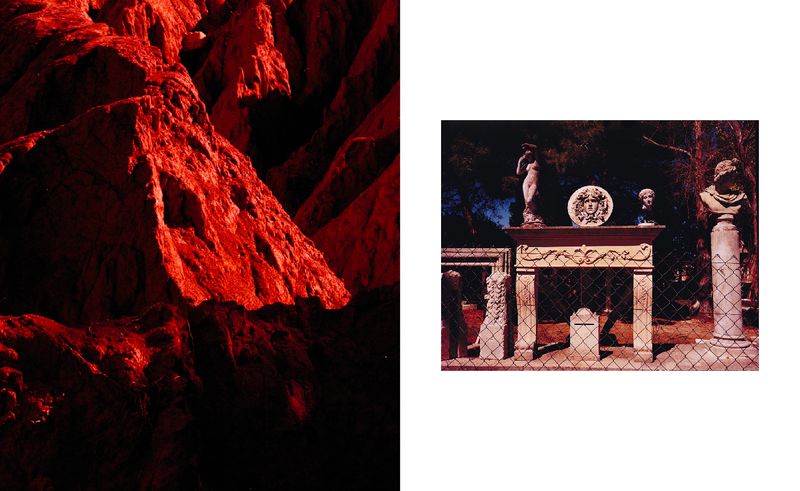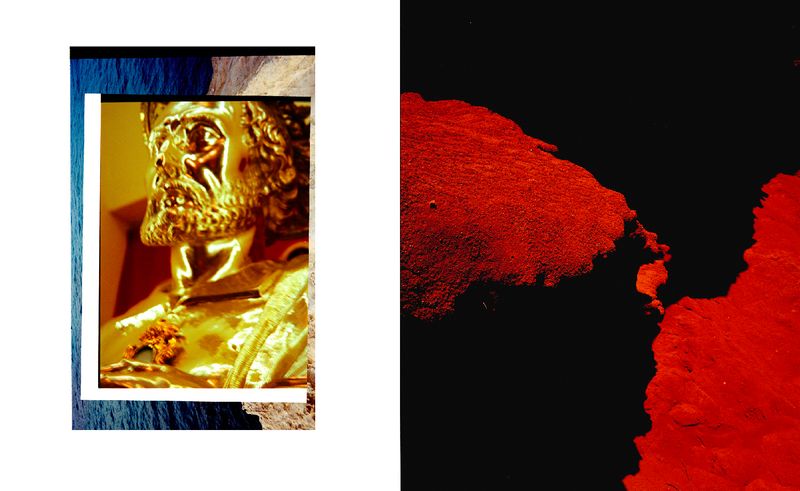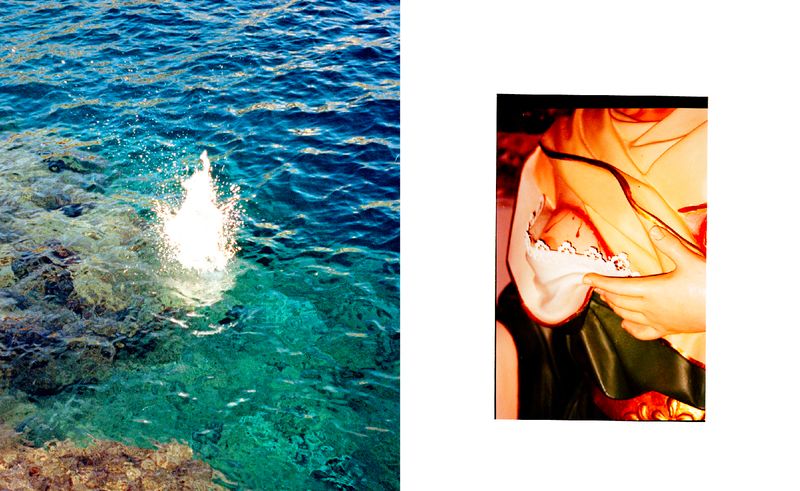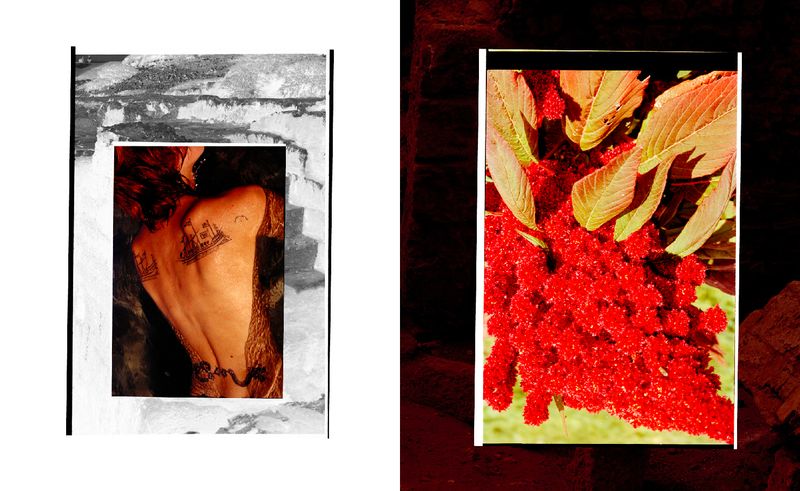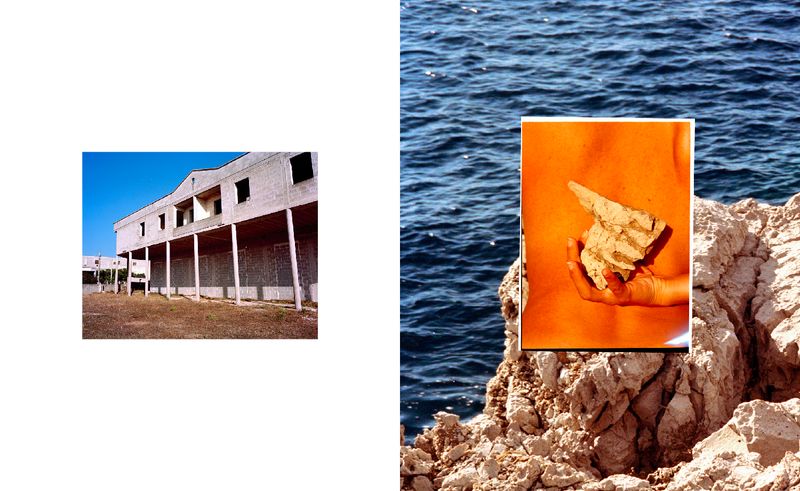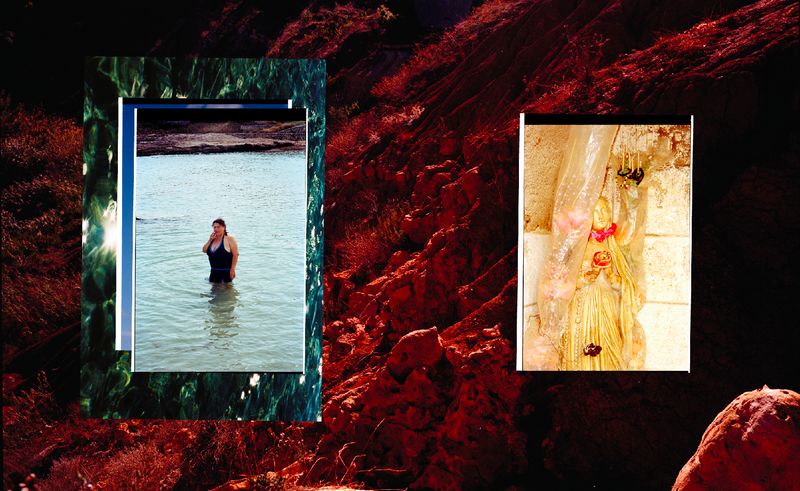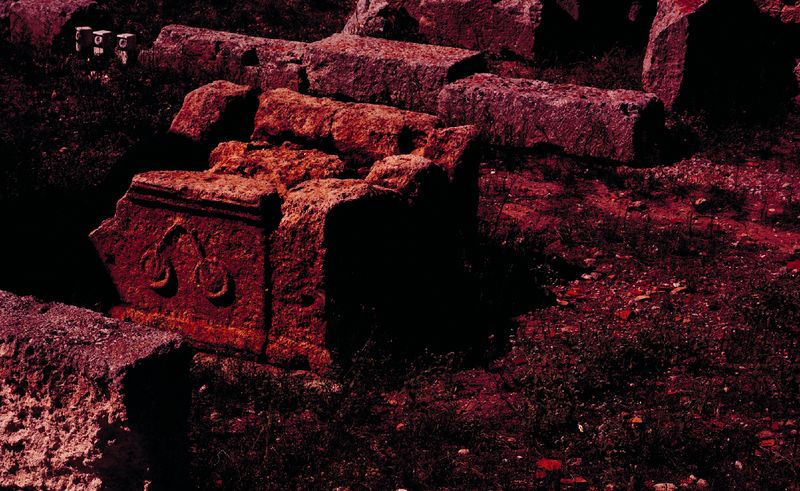SAND OF NOISES - The sea : flat the earth : flat
-
Dates2022 - Ongoing
-
Author
- Locations Italy, Lecce, Leuca
"They tell me: we are an island attached to the other piece. That's the peninsula; but the feeling of a peninsula is something else. It's knowing you're at the other end, attached but outside. To the other piece or to the rest. To know oneself not only a piece but at the end, at the end, at the tip, at the heel. Where the two seas meet, in Santa Maria di Leuca: it's the point and it's not a long sandy road. There the sand is finished. At the edge there is a concrete construction in the shape of an underwater swimming pool, swallowed whole by the waves, swallowed by a grey, silvery sky. Also, an iron ladder that goes from the water to the water, from the efficient realm of men to the underwater life. The stones on the facades already predict it: they have spoken of Atlantis and sinking. But the overflowing pool does not sink completely. It is still barely out of the water, and you can still walk on its surface and think you are gliding on the water. We are an island, I am told, or again: we are the desert. You can see; it's flat, there's the flatness of sands and rocks, straight roads, olive trees whose burnt tops (I'm told) don't grow enough. It is said that the olive oil will soon be finished, and that the sea is gradually covering the sandy beaches. Ten years ago, there was a beach here. Now it's underwater: you can swim from the rocks. The land is receding. The end of the land and the beginning of the infinite horizon of the water is moving forward. It is no longer the point that juts out into the sea, it is the flatness of the water that announces the landscape of the land. This whole island, attached to the other piece, is swept from side to side, swept by salt and wind. The dizzying: as the two seas meet, so do the winds, smashing into summer storms.
The sea: flat. The earth: flat.
The white sun bathed in salt is the same as in the images of man's first steps on the moon. A crust. We no longer know whether, when we speak of the other piece, we are talking about the land to the north - Bari, Naples, Pescara, Bologna, Venice, Genoa, Milan - or rather the sea - the seas. We are more familiar with the seas and the winds than with the rest. That is, what is not the island. The thing to which the island is attached is the sea. The peninsula, the quasi-island, lived as a complete island. We are the desert because we are the piece of the end of the earth, in the middle of the Mediterranean - which is a sea in the middle of the earth - between the seas - Ionian, Adriatic. Closer to Vlora, Tirana and Corfu than to Rome. The stone from which the churches, the town halls and the villages are carved is also golden with sand, like that of the beach that disappeared when the waters rose, and populates the desert on which the amalgamated waves climb. Facades: animals, half-men caryatids, chimeras with raging breasts pointing to the sea route, snakes and madwomen entangled inside the humid flora. Wet as the way in which the language is spoken. Strange way of being in the middle, encircled by waters and coasts, between the winds and the country fires, between the cut stone which is a round paste and the drama of the cliffs. Strange name given to this elementary condensation: desert, piece; even though here the land and the sea are one. Desert because there are too many elements."
Marie Hervé & Elsa Martinez, september 2022
Sand of noises - Marie Hervé & Elsa Martinez is a duo project born in 2020. Conceived in chapters, it documented the city of Palermo in 2020, the island of Sicily in 2021 and the region of Puglia (Italy) in 2022, and draws a trajectory on the lands of the Mediterranean area, exploring Western history and its myths as a fictional, fantasized construction, a place of collective projections or even of political and social marginalization or violence. Exploring the notions of ruins, reconstruction and memory, it develops a photographic and plastic research between image and writing, archaeology and architecture. This composite archive evolves as an itinerary made of accidents and wanderings, circulating between Great History, anecdotes and narratives - understanding the Mediterranean space not as a monolithic subject of study, but rather as a phantasmagorical figure and geography to be reinvented. A place of all projections, the ruins and objects found in our research bear witness to a form of spleen: the impossibility of grasping the truth of what is lost, and of having only fragments, remains, silent witnesses onto which contemporary Mediterranean identities are constantly constructed or deconstructed. Manufacturing mirages, photography leaves its status of proof to become an ambiguous tool, blurring the lines between truth and fiction, document and chimera. By taking up the visual language of archaeology, museology and the historical archive, Sand of noises proposes a re-reading of the politics of conservation and transmission, thinking of memory as successive invention and reconstruction.
This new chapter - The sea : flat the earth : flat - was constructed as an editorial and visual study of the Salento region, in the frame of Nuovo Grand Tour residency at KORA Center (Castrignano de'Greci, Puglia). Inspired by the many myths and legends surrounding the area, this evolving archive tackles the idea of extreme or marginalized lands, proposing a sort of mental map exploring the many ways of inhabiting the territory.
